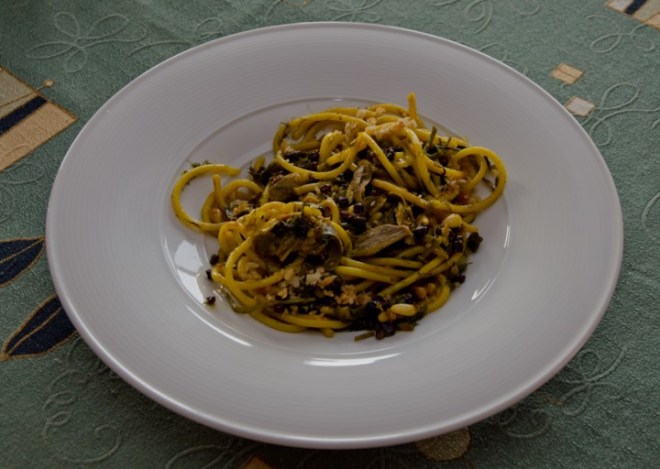
Andrea Calogero Camilleri, a Sicilian director and author, born 6 September 1925; died 17 July 2019.
The entire nation is in mourning: RAI 1 news, the state broadcaster, dedicated 80 per cent of its time slot to this news; writers, intellectuals and the highest representatives of the Italian state have expressed their condolences. Even his arch-enemy, Matteo Salvini, minister of the interior and leader of the xenophobic Northern League party — with whom Camilleri had several heated exchanges over the years — has paid tribute to the popular Sicilian writer.
The paragraph above is from an article published in The Age and The Sydney Morning Herald on July 20. It is written by Barbara Pezzotti, a lecturer in Italian Studies at Monash University. She is the author of three monographs dedicated to Italian crime fiction and has extensively published on Andrea Camilleri.

Camilleri perhaps is best known for his Montalbano novels and has become one of the most-loved crime fiction writers in the world. Camilleri’s books have been published worldwide and translated into 32 languages, including Catalan and Gaelic. The highly successful TV series, inspired by Montalbano’s books became an international success and was broadcast in Australia by SBS. I am sure that the scenes of beautiful Sicily in the series have encouraged many travellers.

There have been many items from around the world in praise of Camilleri and the character Inspector Montalbano, who not only fight the Mafia and solves crimes is also a lover of good food and when Andrea Camilleri died last week, one of my relatives in Ragusa, Sicily sent me an article from Ragusa News, an on-line publication that covers news and interest stories from the Ragusa Province and nearby towns – Vittoria, Modica, Comiso, Scicli, Pozzallo and Ispica.

The article is called Domenica a pranzo onoriamo Camilleri con la pasta ‘Ncasciata (On Sunday for lunch let us honour Camilleri with pasta Ncasciata).

Sunday lunch is still an important family occasion in Sicily and pasta ‘Ncasciata is an Sicilian, oven baked pasta dish and one of Montalbano’s favorite things to eat. It is prepared for him by his housekeeper, Adelina. (Place above is where Montalbano lives in the TV series.

Camilleri in his Montalbano series of books describes almost every dish Montalbano eats. And every dish is traditionally Sicilian.

There are many versions of pasta ‘Ncasciata in Sicily, with different combinations of ingredients but the most noteworthy one is from Messina and the recipe in this article appears to be the Messinese version and is made with commercial, short shaped pasta in layers dressed with tomato meat sauce, mortadella or salami, fried eggplant, caciocavallo cheese, salami and hardboiled eggs. Although I have eaten pasta ‘Ncasciata, I have never liked the sound of this dish and have never made it.

Apart from Pasta ‘Ncasciata, Montalbano has other favourites and obviously I like them too as I have written them in my blog and my first book, Sicilian Seafood Cooking.
Spaghetti con ricci di mare:
SEA URCHINS – how to clean and eat them (RICCI DI MARE)
SPAGHETTI CHI RICCI – SPAGHETTI CON RICCI DI MARE (Spaghetti with sea urchins)
Rice or Pasta with Black Ink sauce:
MONTALBANO’S PASTA WITH BLACK INK SAUCE
Pasta con le sarde:
PASTA CON LE SARDE, Iconic Sicilian made easy
PASTA CON LE SARDE, an iconic Sicilian recipe from Palermo. Cooked at Slow Food Festival Melbourne
Arancini:
GREAT BRITISH CHEFS, GREAT ITALIAN CHEFS, Feature articles by Marisa Raniolo Wilkins
ARANCINI (where else… but in Hong Kong!)
ARANCINI, Rice Balls at Caffé di Lido
Caponata:
CAPONATA Catanese (from Catania) made easy with photos
CAPONATA FROM PALERMO (made with eggplants)
A MOUNTAIN OF CAPONATA – two days before Christmas
Sarde a beccafico:
SARDE A BECCAFICO (Sardines stuffed with currants, pine nuts, sugar and nutmeg)
Cassata:
SICILIAN CASSATA and some background (perfect for an Australian Christmas)
SICILIAN CASSATA and MARZIPAN AT EASTER (Food and Culture in Sicily, La Trobe University)
CASSATA DECONSTRUCTED – a postmodernist take on Sicilian Cassata
CASSATA (It is perfect for an Australian Christmas)
CASSATA ( Post no. 2) Calls for a celebration!!!
























![Arancini by Emanuel[3]](https://i0.wp.com/allthingssicilianandmore.com/wp-content/uploads/2018/02/Arancini-by-Emanuel3.jpg?resize=660%2C510&ssl=1)











































